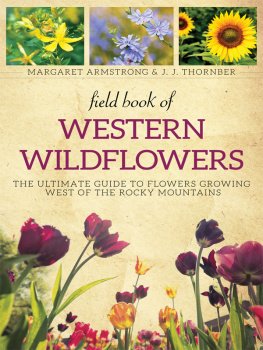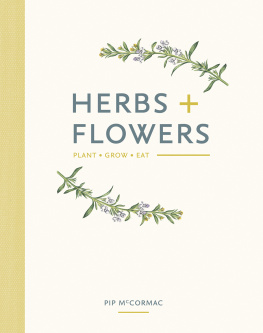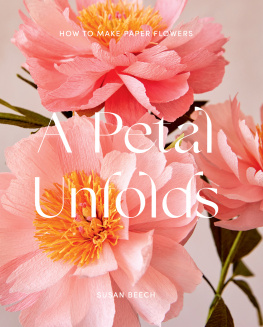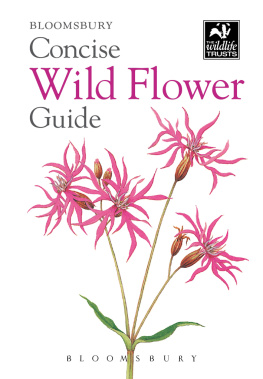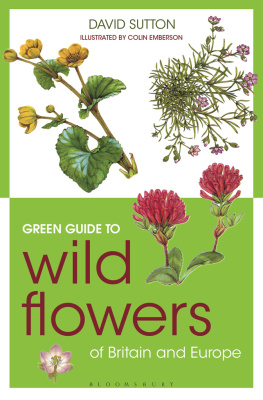Copyright 1915, 2014 by Margaret Armstrong
All Rights Reserved. No part of this book may be reproduced in any manner without the express written consent of the publisher, except in the case of brief excerpts in critical reviews or articles. All inquiries should be addressed to Skyhorse Publishing, 307 West 36th Street, 11th Floor, New York, NY 10018.
Skyhorse Publishing books may be purchased in bulk at special discounts for sales promotion, corporate gifts, fund-raising, or educational purposes. Special editions can also be created to specifications. For details, contact the Special Sales Department, Skyhorse Publishing, 307 West 36th Street, 11th Floor, New York, NY 10018 or .
Skyhorse and Skyhorse Publishing are registered trademarks of Skyhorse Publishing, Inc., a Delaware corporation.
www.skyhorsepublishing.com
10 9 8 7 6 5 4 3 2 1
Library of Congress Cataloging-in-Publication Data is available on file.
ISBN: 978-1-62873-795-0
Printed in China
PREFACE.
I N this little book a very large number of the commoner wild flowers growing in the United States, west of the Rocky Mountains, are pictured and described. It is the first attempt to supply a popular field book for the whole West. The field is vast, including within its limits all sorts of climate and soil, producing thousands of flowers, infinite in variety and wonderful in beauty, their environment often as different as that of Heines Pine and Palm . In such strange homes as the Grand Canyon and the Petrified Forest of Arizona, or the deserts of Utah and southern California, we find the oddest desert plants, forced to curious expedients in order to sustain life amidst almost perpetual heat and drought, but often displaying blossoms of such brilliance and delicacy that they might well be envied by their more fortunate sisters, flourishing beside shady waterfalls, in a happy valley like Yosemite, or a splendid mountain garden, such as spreads in many-colored parterres of bloom around the feet of Mt. Rainier. On the wind-swept plains hundreds of flowers are to be found; many kinds of hardy plants brighten the salty margins of the sea cliffs, or bloom at the edge of the snow on rocky mountain peaks, while quantities of humble, everyday flowers border our country roadsides or tint the hills and meadows with lavish color.
The field includes the States of Washington, Oregon, California, Idaho, Nevada, Utah, and Arizona and to designate this whole field the term West is used in this book. The term Northwest designates Washington, Oregon, northern Idaho, and northern California, and the term Southwest covers southern California and Arizona. The flowers found only in the Rocky Mountains are not included, and it may be noted here that exceedingly few of the western flowers cross the Rockies and are found in the East.
This is the only fully illustrated book of western flowers, except Miss Parsonss charming book, which is for California only. The drawings have all been made from life. Allowance must be made for differences in appearance, owing to locality, and the text should be consulted for the size, as, on so small a page, some of the plants must be drawn smaller than others.
Almost all technical botanical terms have been translated into ordinary English, as this book is intended primarily for the general public, but as a large number of the plants given have never before been illustrated, or even described, except in somewhat inaccessible or technical publications, it is hoped that the scientist also may find the contents both interesting and useful.
The nomenclature used, with few exceptions, is that of the American Code. Where these names differ greatly from those in common usage the latter are given as synonyms in brackets, making the book more useful to all readers. The botanical names are marked with an accent. Two accents are used, the grave () to indicate the long English sound of the vowel, such as the i in violet, and the acute () to show the short sound, such as the i in lily,
Professor J. J. Thornber, of the University of Arizona, is responsible for the botanical accuracy of the text and his knowledge and patient skill have made the book possible.
Thanks are due for most valuable assistance in the determination of a very large number of specimens to Miss Alice Eastwood, of the California Academy of Sciences. Also to Dr. W. L. Jepson, of the University of California; Professor A. O. Garrett, of Salt Lake City; Professor A. R. Sweetser, of the University of Oregon; Mr. S. B. Parish, of San Bernardino, Cal.; Mrs. Henshaw, of Vancouver, B. C.; Dr. A. Davidson, of Los Angeles; and Mr. Marcus E. Jones, of Salt Lake City. Also for advice and assistance to Dr. N. L. Britton, and Dr. H. M. Richards of New York; to Dr. Livingston Farrand, of Colorado; Mr. C. R. Orcutt, of San Diego; Mr. Carl Purdy, of Ukiah, Cal.; Professor Flett, of Mt. Rainier National Park; Miss Winona Bailey, of Seattle; Professor J. H. Paul, of Salt Lake City; and many other kind friends.
The arrangement is that originated by Mr. Schuyler Mathews, in his Field Book of American Wild Flowers , which has been found very popular in the East, but, in this book, most of the genera, as well as the species, have been very briefly described.
M ARGARET A RMSTRONG.
N EW Y ORK,
January 1, 1915.
CONTENTS.
COLORED ILLUSTRATIONS.
TECHNICAL TERMS.
Corolla. The flower-cup composed of one or more divisions called petals.
Petal. One of the divisions of the corolla.
Calyx. A flower-envelope, usually green, formed of several divisions called sepals, protecting the bud.
Sepal. One of the divisions of the calyx.
Anther. The pollen-bearing organ, usually yellow.
Filament. The stalk-like support of the anther.
Stamen. Anther and filament combined.
Ovary. The seed-bearing organ.
Ovary inferior. With the flower-parts growing from above the ovary.
Ovary superior. With the flower-parts growing from below the ovary.
Placenta. That particular portion of the ovary wall to which the ovules are attached.
Ovule. The body in the ovary which becomes a seed.
Style. The stalk-like projection proceeding from the ovary and terminated by the stigma.
Stigma. The generally sticky and sometimes branching termination of the pistil through which pollination takes place.
Pistil. Ovary, style, and stigma combined.
Regular Flower. Generally symmetrical and uniform in the number of its parts.
Perfect Flower. A flower complete in all the common parts.
Staminate. With stamens and without pistils.
Pistillate. With pistils and without stamens.
Polygamous. Pistillate, staminate, and perfect flowers, on the same or on different plants.
Claw. The narrow or stalk-like base of some petals.
Pedicel. The stalk of a flower in a cluster.
Raceme. A flower-cluster in which the flowers are borne along the flower-stalk on pedicels of nearly equal length.
Spike. A flower-cluster in which the flowers have no pedicels and are arranged more or less closely along the flower-stalk.
Bracts. Small scalelike formations.
Involucre. A circle of bracts below a flower-cluster.
Stipule. Small often leaflike formations, confined to the base of the leaf.
Capsule. A dry seed-vessel, composed of more than one part and splitting open.
Akene. A small dry one-seeded fruit, not splitting open.
A KEY TO THE FAMILIES.
A. Parts of the flower nearly always in threes; leaves almost always parallel-veined.

